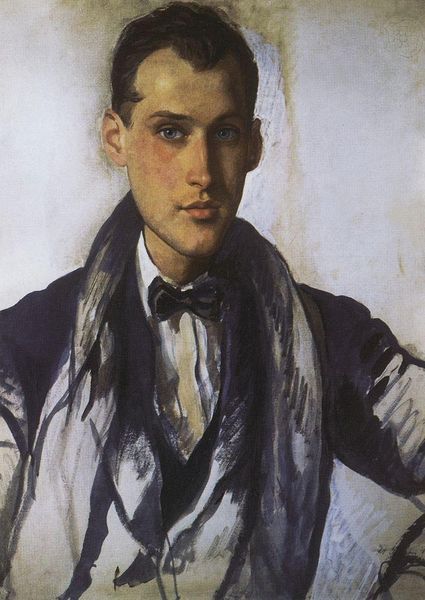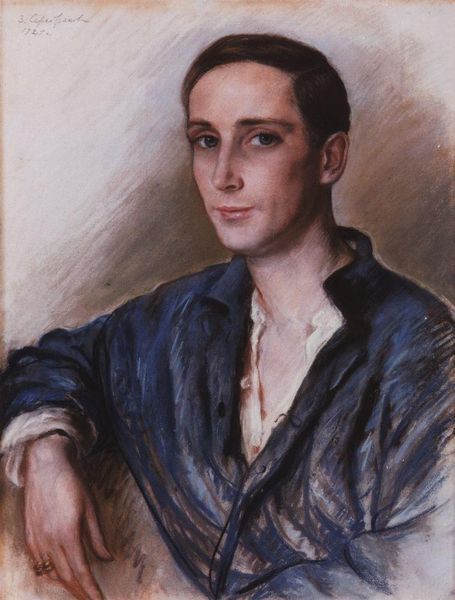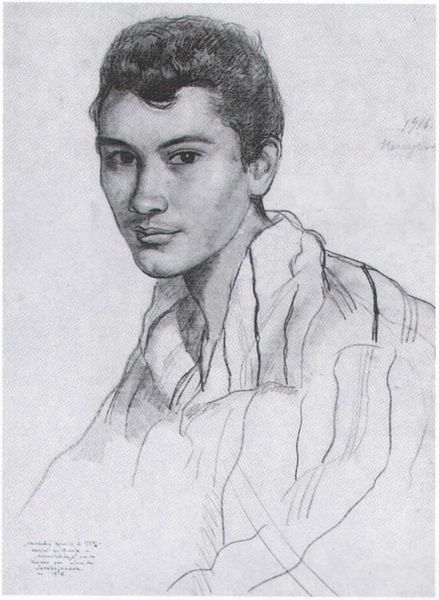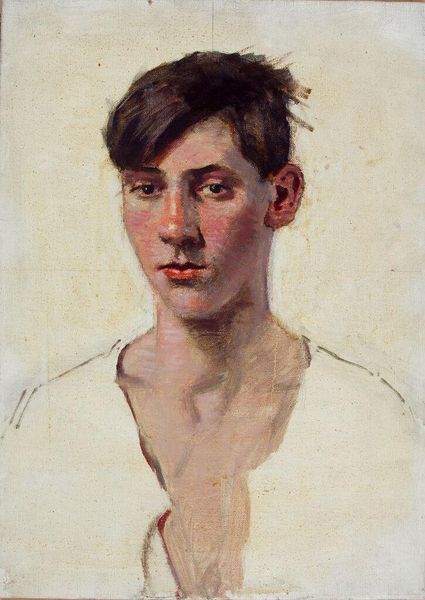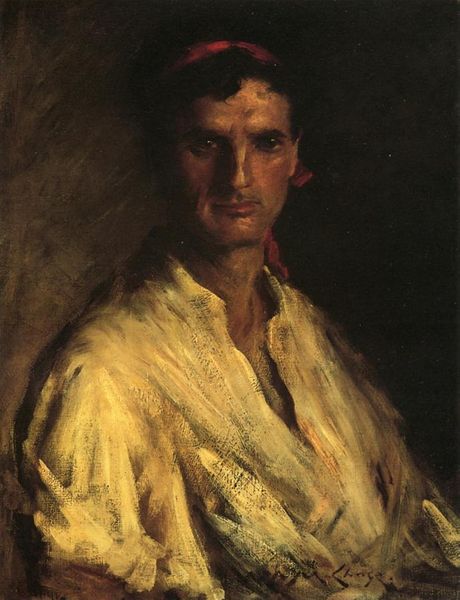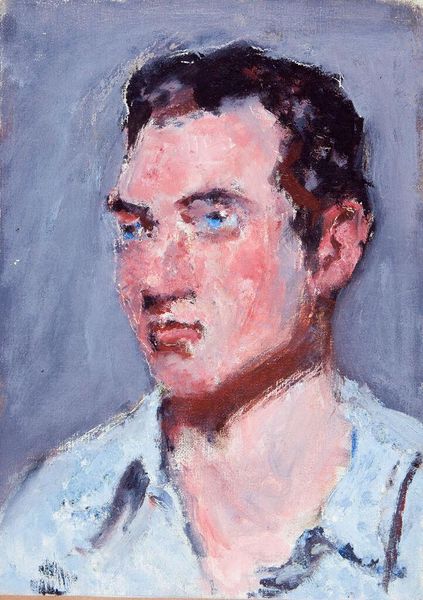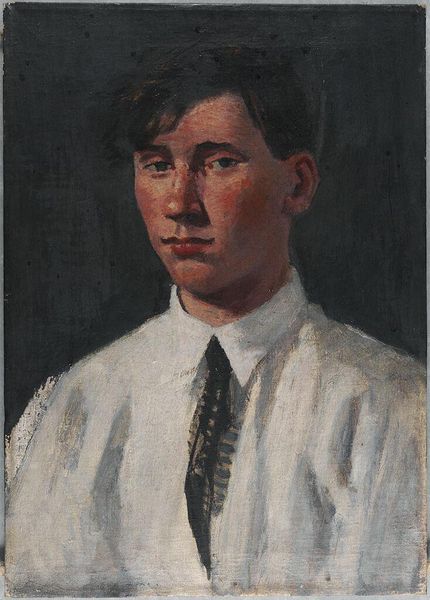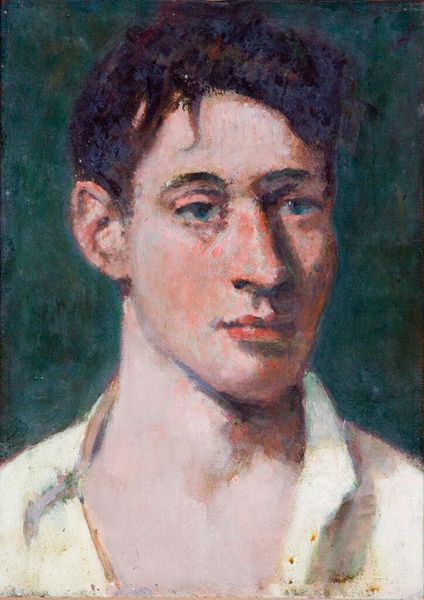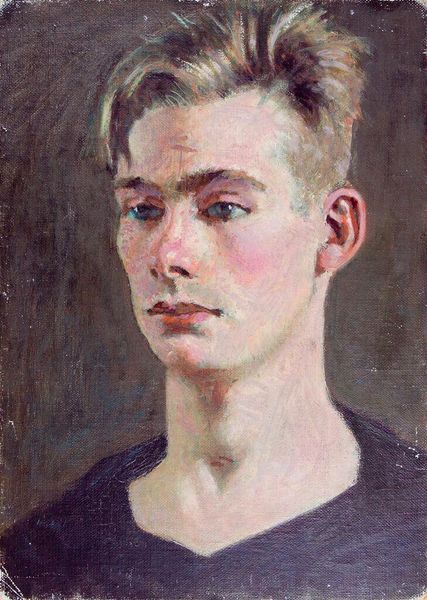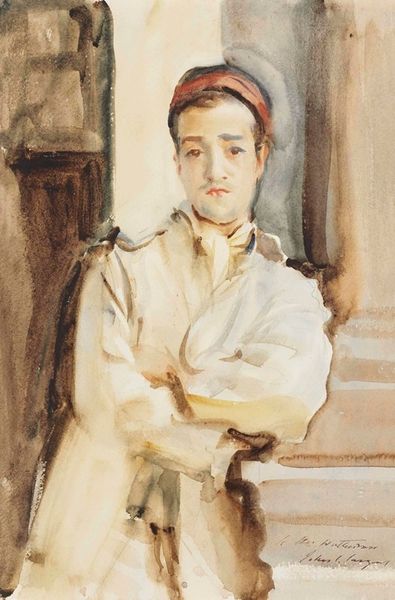
Copyright: Public domain US
Curator: Zinaida Serebriakova painted "Portrait of V. M. Dukelsky" in 1920. Editor: There’s something haunting about the fluidity of this portrait. The subject's almost disappearing into the muted background. The textures are also interesting. Curator: Absolutely, the ethereal quality speaks volumes about the historical moment. The Russian Revolution had occurred just a few years before, and Serebriakova's work, while seemingly traditional in its portraiture, hints at the anxieties and uncertainties of that time. We need to consider her position as an artist who would soon emigrate from Russia, stripped of her property. This piece captures that state of transition, I feel. Editor: You can definitely sense the economic constraints pressing onto artistic output through the materials used. It looks like primarily watercolor on paper. This was possibly due to resource limitations imposed by war and revolution rather than artistic choices. Serebriakova and her family must have had to be increasingly resourceful in order to practice art as the revolution continued. Curator: The very act of creating art during such turmoil becomes a form of quiet resistance, wouldn't you say? While overtly political statements may not be present, her dedication to representing human form and emotion provides an invaluable counterpoint to the dehumanizing forces at play. The portrait aesthetic itself becomes charged. Editor: And notice the open shirt collar, the simplicity of the coat and the subtle gradations of tone; Serebriakova seems particularly concerned with natural light as she subtly models her subjects face and costume. A light coat of watercolour allows you to perceive a lot of the material qualities of the paper beneath. There’s a beauty in that apparent austerity. Curator: The soft rendering adds a layer of vulnerability to Dukelsky's expression. I perceive this man's eyes as embodying a kind of cautious hope. Is he weary from the era’s hardship or determined to build a new future? Perhaps the painting intentionally withholds answers. The focus on Dukelsky's personal gaze in a time of collectivization emphasizes the importance of individual stories and experiences amid larger social upheaval. Editor: Yes, that ambiguity makes it more profound to me. The subdued palette perhaps emphasizes the need to make do with limited available materials in a revolutionary, fractured landscape. Curator: Seeing the world through the lens of art from marginalized perspectives allows for more profound analysis. Thank you for highlighting materiality of artistic making here. Editor: And for illuminating the powerful social dimensions present even in apparently quiet artworks.
Comments
No comments
Be the first to comment and join the conversation on the ultimate creative platform.
